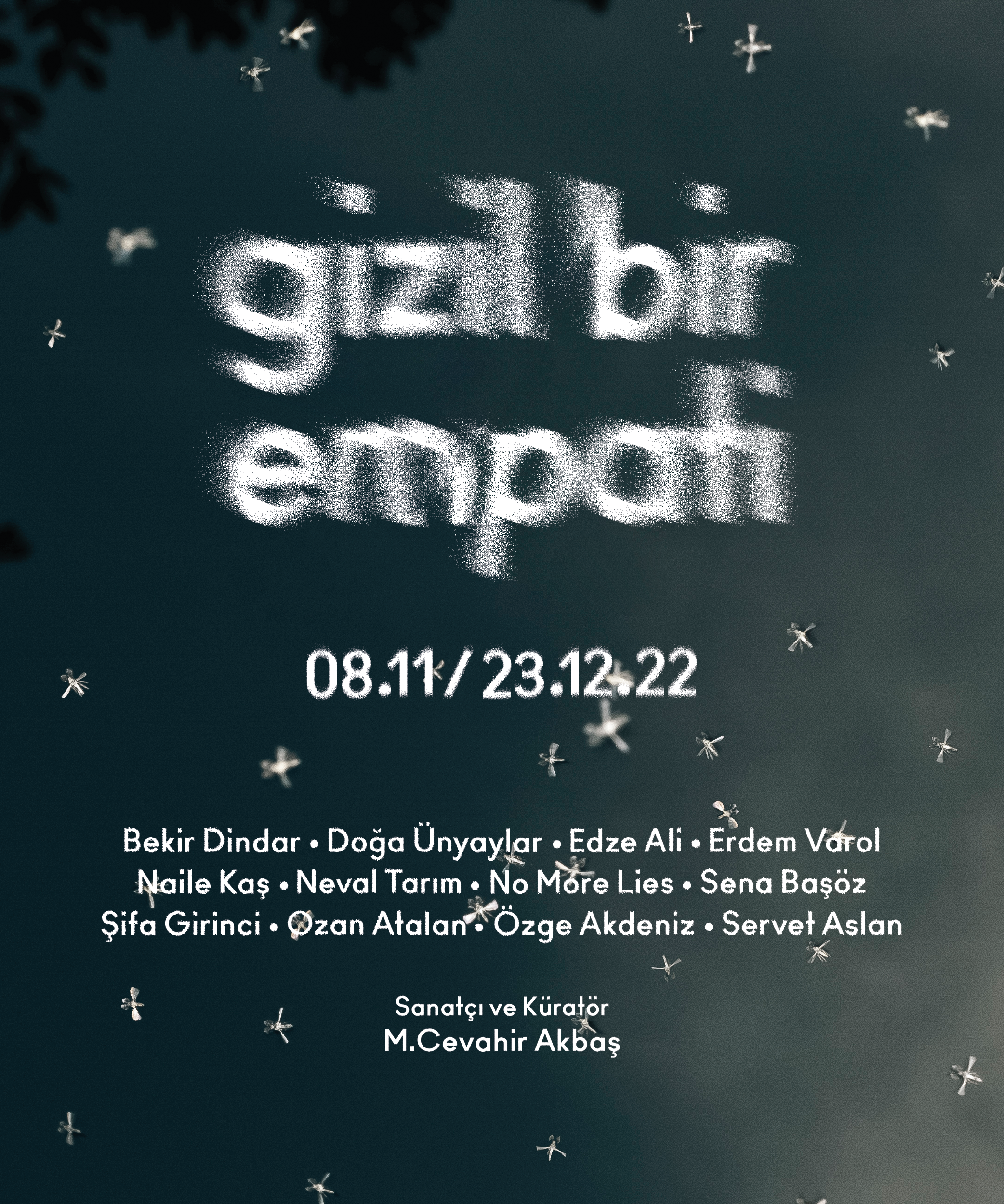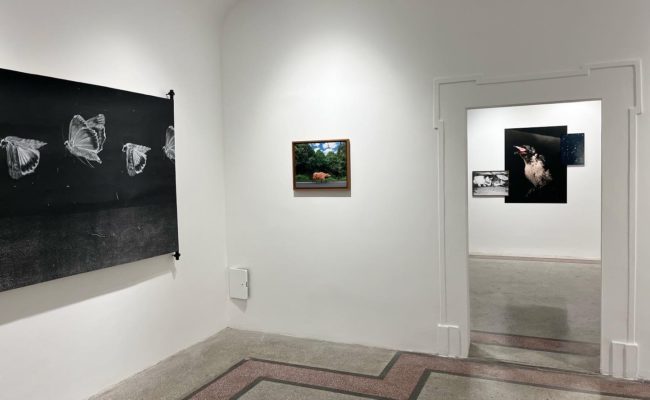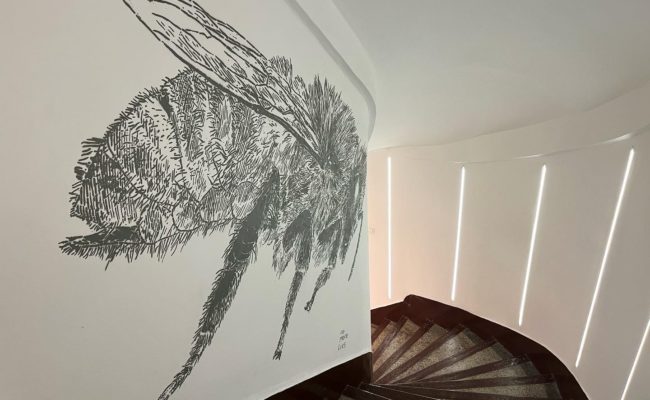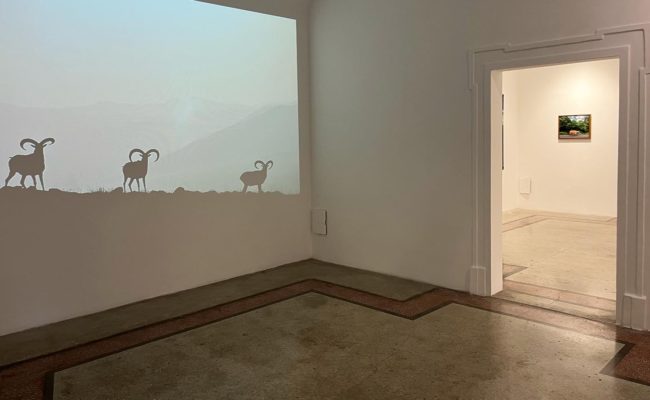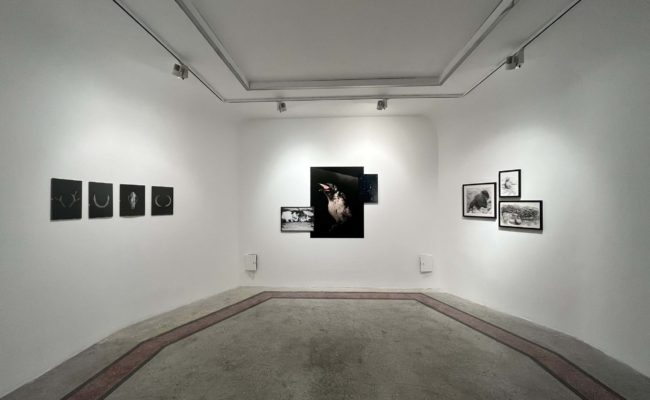"It is not those who speak the same language who can understand, but those who share the same feelings." Mevlana
Communication appears as a series of dialogues that a living being develops regularly from the moment it is born. From birth to death, all living beings organically and inorganically maintain a certain communication with society, nature and animals. Developed in different environments and at varying frequencies, communication is mostly constructed through a mutual transmission. Today, however, a process of direct and indirect, visible and hidden dialog such as human - human, human - nature, human - animal, human - object comes to the fore.
Curated by M. Cevahir Akbaş, the exhibition "A Hidden Empathy" underlines the invisible, unseen and unperceived sides of all these communications as well as their taken-for-granted aspects. Along with the dialogues that humans establish with various segments of society in the same sequence, the importance of this exhibition is the communication established with animals and the concept of empathy developed mutually with living creatures. The empathic communication that humanity develops with all animals, whether domestic or wild, is strikingly addressed in this exhibition. The ties of friendship, spontaneous companionship and friendship between humans and animals are rendered visible through the works of artists working in interdisciplinary practices. Bekir Dindar, Edze Ali, Erdem Varol, Naile Kaş, M. Cevahir Akbaş, No More Lies, Şifa Girinci, Özge Akdeniz, Servet Aslan, Sena Başöz, Ozan Atalan, Neval Tarım and Doğa Ünyaylar's video, photography, painting, installation, sound installation, drawing, stencil/graffiti works convey the process of dialog with animals through their works.
In addition to developing dialogue, it is reported that empathy is mostly between humans, whereas an invisible empathy process has developed with domestic and wild animals in social life, not only with humans. In addition to the creatures we live with today, mostly in houses or farms, such as cats, dogs, birds, chickens, cows, horses, donkeys, wild animals or various insects that we encounter in nature are part of social life. In how many days would the whole ecosystem end without bees? Each living race is strikingly important parts of an ecological succession. In addition to these, domestic animals that are regularly fed in homes and farms, and that receive veterinary care and vaccination checks, non-violent animals living on the
streets also lead humanity to reconsider emotions such as compassion, conscience, love and hate while empathizing. The empathy between a pet at home and an animal living on the street can sometimes be very powerful, sometimes quite hurtful and sometimes healing. The sense of compassion we develop towards all these creatures in our personal lives comes from the most basic inner, intuitive aspects of being human. Wild land and sea animals such as bees, bears, foxes, foxes, snakes, spiders, gazelles, flies, butterflies, jellyfish, fish, eagles, etc. living in nature, in places such as forests, mountains and the sea, continue their lives within the ecosystem in a hidden natural pattern and task, although they are not well known by humanity.
The artists in the exhibition "A Hidden Empathy" present a narrative through their personal stories with living creatures with whom we dialog with unconditional love and empathy. Many emotions such as urban transformation, ecological destruction, lack of compassion, marginalization, identity, belonging, death, life, migration, existence, love and destruction are opened to a multidimensional evaluation in "A Hidden Empathy" exhibition.
In Bekir Dindar's photograph "Flu", the image of a red, tile-colored cow in front of a lush green forest appears with the contrasting contrast of urban transformation. Naile Kaş's "Memento Mori", a dragonfly whose life has ended and turned into a two-dimensional pattern, presents signs of a naive, transient, transformative, mortal and mortal deception with its broken and shattered tail. Edze Ali's photograph of a jellyfish titled "Sleeping Medusa" is seen in the lyrical flow of a calm life with a transparent image in a fluid and clear marine life.
Erdem Varol's photographs "Gak", "Flies" and "Cat and Mouse" bring contrasting, harmonious emotions to the fore: peace and chaos. The raven's blue sharp gaze and almost audible voice, the cat's playful, mischievous image and the flies flying in a balance in the sky are observed in an ironic contrast.
M. Cevahir Akbaş's installations and photographs from the "Hunter" series appear like fossils as a sign of the other side of life, of being mortal, of being erased from the world and left behind as a trace.
No More Lies, on the other hand, evaluates a domestic cat and a bee, which we know as a wild species, from an individualistic perspective in his works titled "Obedience" and "Sacrifice" in the airbrush technique realized with ecoline paint.
Şifa Girinci's dove paintings from the "Streptopelia Decaocto Series" deal with the story of migration from Anatolia to Europe and mostly Germany. Paralleling the first labor migration
from Turkey to Germany, the dove migration is implicitly and strikingly presented through migration, human life and the migration of animals, pointing to the third largest migration wave in the world, whose migration routes continue today.
Özge Akdeniz's butterfly paintings "Wings Depressed", painted with charcoal paint on canvas, are traced as a migration of moths, like a flight trail from an intense darkness towards the dawn light that will illuminate the darkness.
Servet Aslan, on the other hand, makes visible the traces of a political destruction, a social catastrophe in his ink pen works in the series he calls "Dung Beetle". With the dung beetle, a destructive reality makes visible realities that are repulsive, disgusting and question humanity. Sena Başöz's video "Turkey's Wild Mammals" appears as an image of wild animals associated with various human names. The satirical meaning of the title of the work examines layered, heterogeneous discourses of humanity.
Ozan Atalan's multimedia installation "Deep Conversation" turns into a map inspired by the image of a web drawn by a spider like a strategic architectural genius. Neval Tarım's sound installation "Habitat" on the stairs of Kasa Gallery, on the other hand, is constructed with the nonverbal dialogues of humans and animals and the sounds of their ordinary movements within themselves, referring to a coincidental movement spectrum and sensation. Doğa Ünyaylar's sound installation "From air, water, ground" begins to be heard as a multi-layered sound by bringing together the sounds of animals living in three different layers of the world.
Ultimately, "A Hidden Empathy" emphasizes the empathy between humans and animals. The fragmental and heterogeneous nature of the communication between humans and animals is made visible through interdisciplinary works with an implicit emotional unity. Bekir Dindar, Edze Ali, Erdem Varol, Naile Kaş, artist and curator M. Cevahir Akbaş, No More Lies, Şifa Girinci, Özge Akdeniz, Servet Aslan, Sena Başöz, Ozan Atalan, Neval Tarım and Doğa Ünyaylar's exhibition, which is located within the special architectural texture of Kasa Gallery, focuses on the unshakable and invisible, intuitive world of the unadulterated relationship between humans and animals.
Melike Bayık
